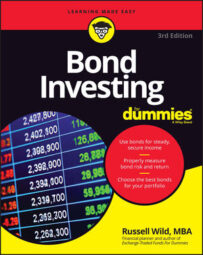Just as maturity is a major consideration when choosing a Treasury, it should also be a big consideration when choosing corporate bonds. In general (but certainly not always), the longer the bond’s maturity, the higher its interest rate will be because your money will potentially be tied up longer.
And the longer the maturity, the greater the volatility of the price of the bond should you wish to cash out at any point.
One consideration that pertains to corporate bonds but not to Treasuries is the nasty issue of callability. Treasuries aren’t called. (Once upon a time they were, but no longer.) Corporate bonds (as well as municipal bonds) often are. And that can make a huge difference in the profitability of your investment.
Callability and corporate bonds
Few things in life are as frustrating as a computer crashing. It seems to catch all of us at the least opportune moment, such as right smack in the middle of a huge work project. If you own a callable bond, chances are that it will be called at the worst moment — just as interest rates are falling and the value of your bond is on the rise.
At that moment, the company that issued the bond, if it has the right to issue a call, no doubt will. And why not? Interest rates have fallen. The firm can pay you off and find someone else to borrow money from at a lower rate.
Because calls aren’t fun, callable bonds must pay higher rates of interest.
If you’re inclined to go for the extra juice that comes with a callable bond, fine. But you should always do so with the assumption that your callable bond will be called. With that in mind, ask the broker to tell you how much (after taking his markup into consideration) your yield will be between today and the call date.
Consider that a worst-case-yield. (It’s often referred to as yield-to-worst-call, sometimes abbreviated YTW.) Consider it the yield you’ll get, and compare it to the yield you’ll be getting on other comparable bonds. If you choose the callable bond and it winds up not being called, hey, that’s gravy.
Some squirrelly bond brokers, to encourage you to place your order to buy, will assure you that a certain callable bond is unlikely to be called. They may be right in some cases, but you should never bank on such promises.
That being said, interest rates are likely to be climbing rather than falling in the coming years, so callability probably won’t be as big an issue as it has been in the past.
Convertibility and corporate bonds
Another wrinkle in corporate bonds is a particular kind of issue called a convertible bond. Some corporate bond issuers sell bonds that can be converted into a fixed number of shares of common stock.
With a convertible bond, a lender (bondholder) can become a part owner (stockholder) of the company by converting the bond into company stock. Having this option is a desirable thing (options are always desirable, no?), and so convertible bonds generally pay lower interest rates than do similar bonds that are not convertible.
If the stock performs poorly, no conversion happens; you are stuck with your bond’s lower return (lower than what a nonconvertible corporate bond would get). If the stock performs well, a conversion happens, so you win — so to speak.
Know this: Convertible bonds, which are fairly common among corporate bonds, introduce a certain measure of unpredictability into a portfolio. Perhaps the most important investment decision you can make is how to divide your portfolio between stocks and bonds.
With convertibles, whatever careful allotment you come up with can be changed overnight. Your bonds suddenly become stocks. You are rewarded for making a good investment, but just as soon as you receive that reward, your portfolio becomes riskier. It’s the old trade-off in action.
Convertible bonds may not be horrible investments, but they don’t deserve a very sizeable allotment in most individuals’ portfolios.
Reversing convertibility . . . imagine that
One relative newcomer to the world of corporate bonds is the reverse convertible security, sometimes referred to as a revertible or a revertible note.
A reverse convertible converts to a stock automatically if a certain company stock tumbles below a certain point by a certain date. Why would anyone want such a thing? You guessed it: The bond pays a thrillingly high interest rate (perhaps 2 or 3 or more percentage points above and beyond even the high rates paid on junk bonds), but only for a year or so.
That’s the hook. The catch is that the company paying the high interest rate is often in dire trouble. If it goes under, you could lose a bundle. Is that really the kind of risk you want to take with a fixed-income investment?

